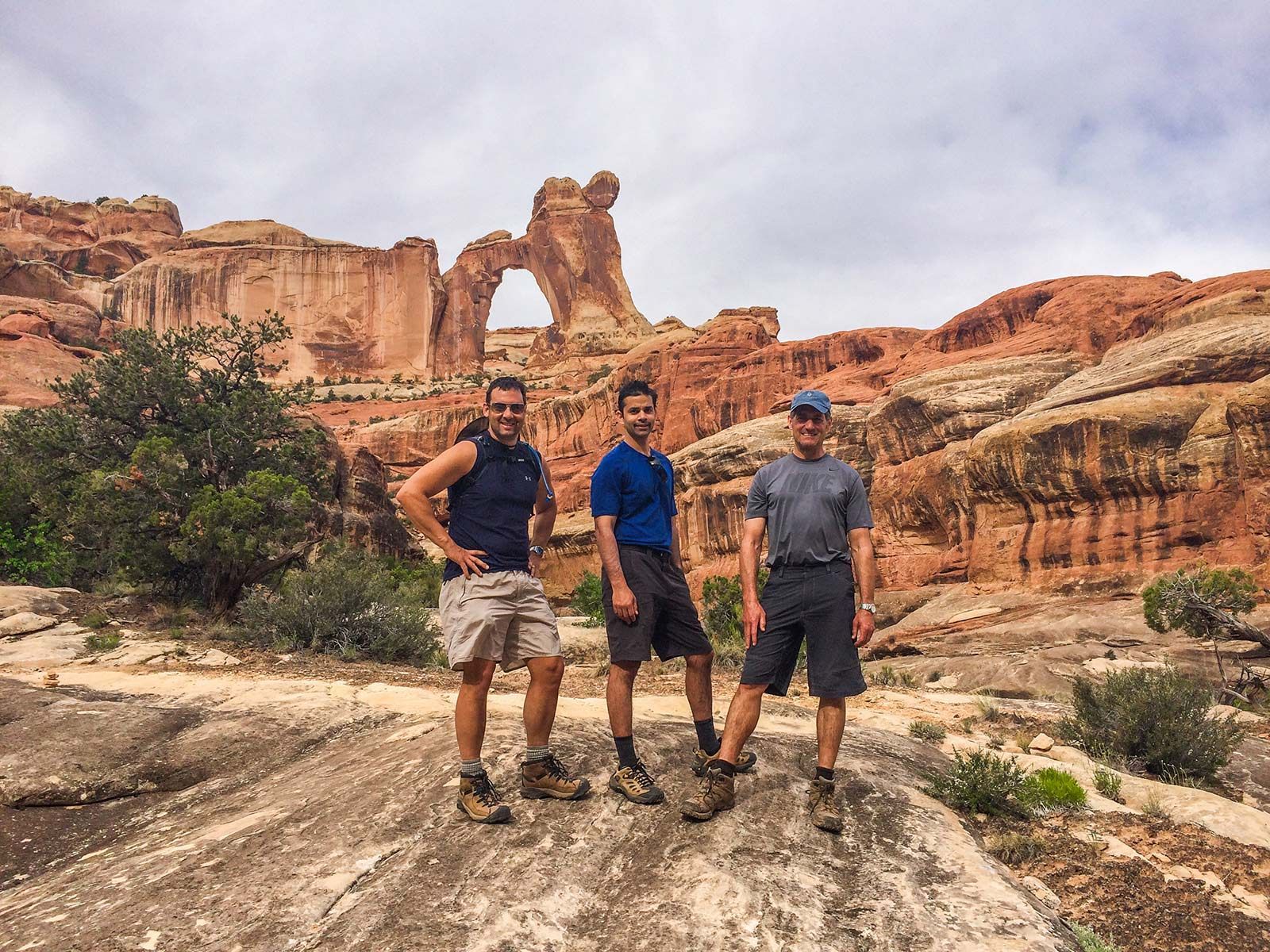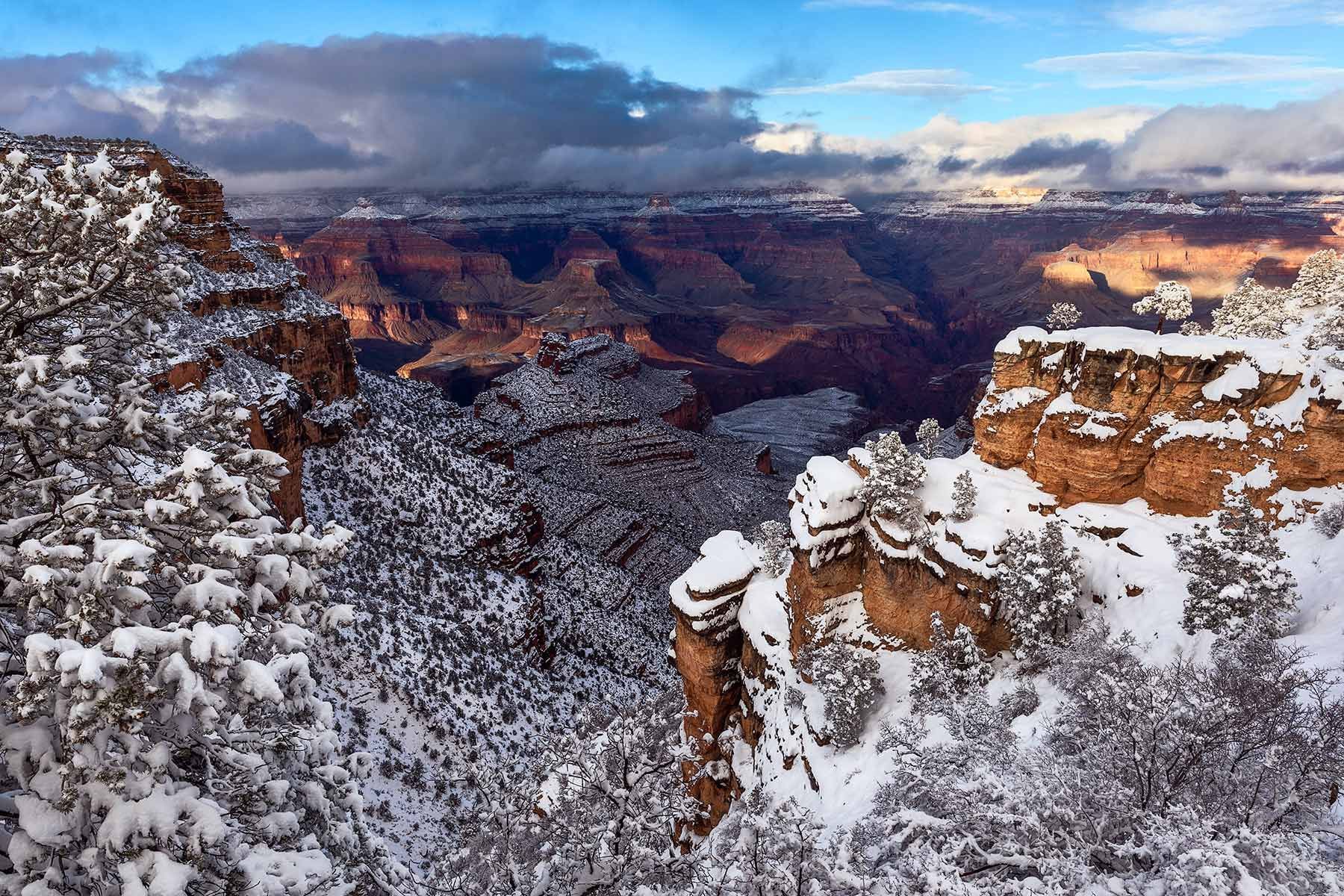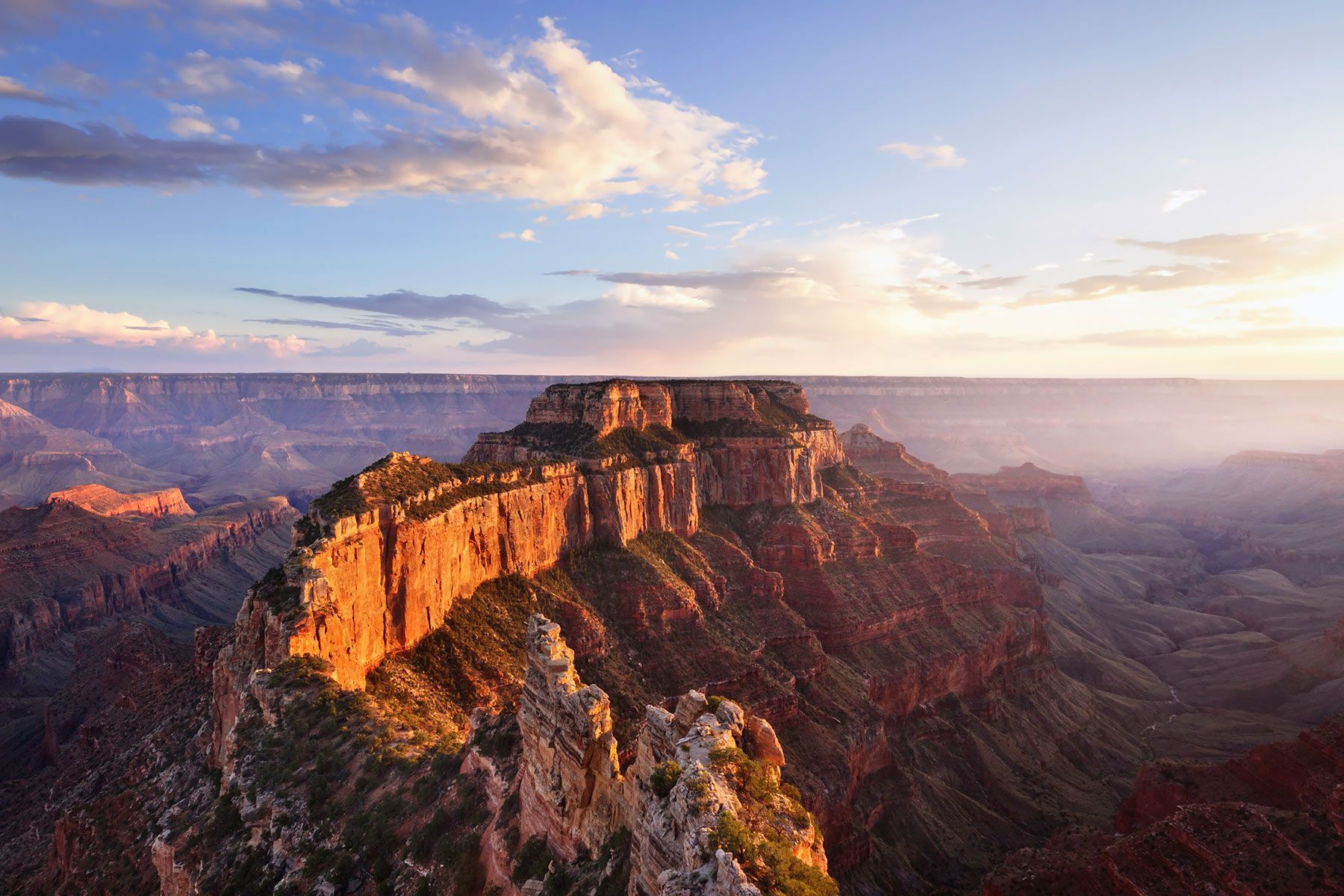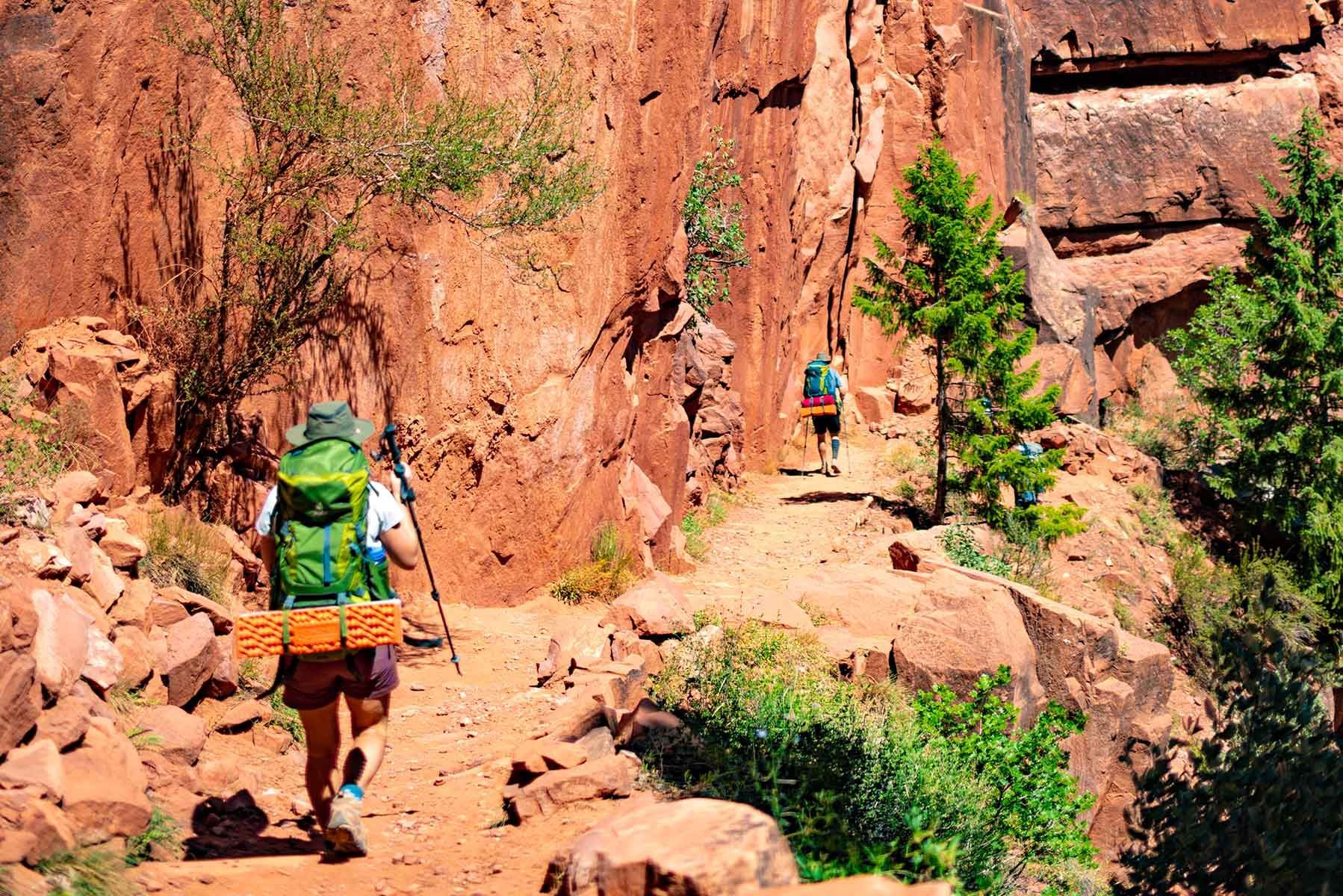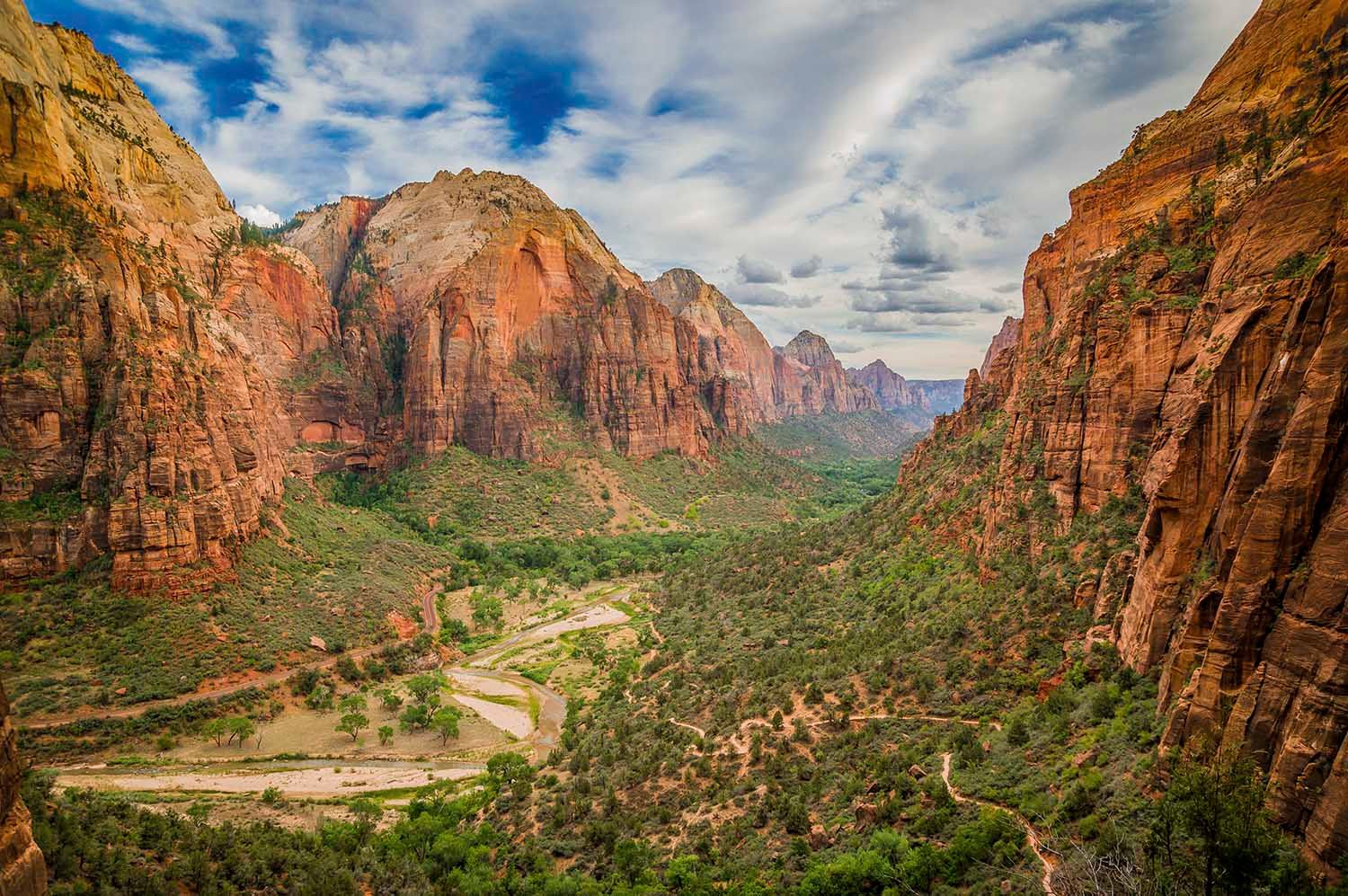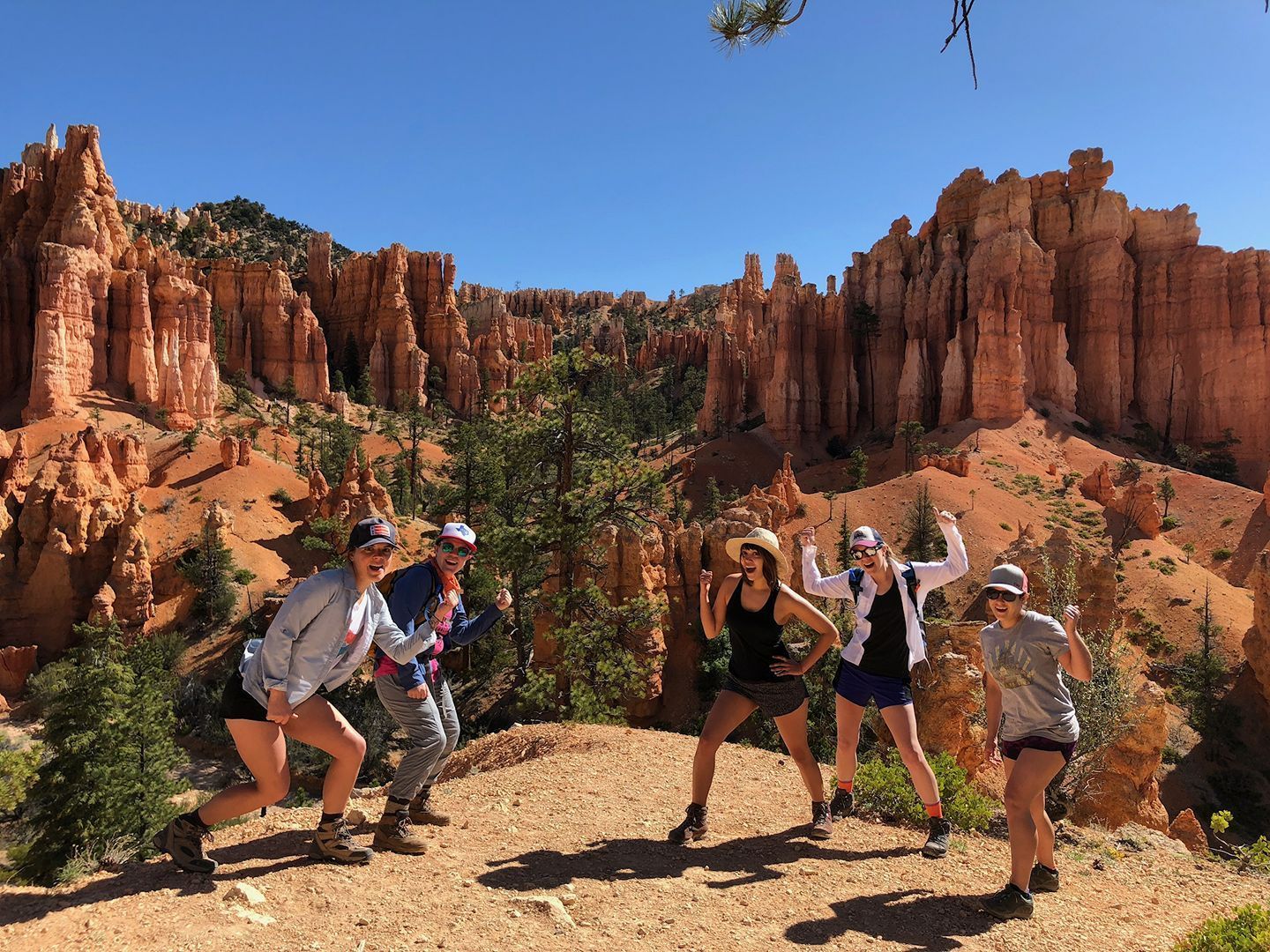Staying Hydrated When Hiking in the Desert Southwest
Hydration
The dry desert atmosphere is going to suck the water out of you in every which way. Your body will need plenty of water for hike just to meet its basic needs but you will be losing plenty of water to sweat and even breathing. The dry air around you literally acts like a sponge, drawing the water out of you as you don’t even realize it. The actual amount of water for hiking you will need to drink will vary greatly but it will be directly related to the following factors: level of exertion, time spent outside, outside temperature, and humidity. But when the temperatures are hitting the 90s during the day, the average desert hiker or backpacker should expect to require about 6 to 8 liters per day for a 6 to 8 hour day of desert hiking.
WHAT TO DRINK AND WHEN
A basic rule of thumb is to drink when you’re thirsty. There’s no need to “camel-up”, or worry about what to drink before long walks—just listen to your body. Your body can only process so much drinking water in desert at a time and will get rid of any excess. Additionally, over-hydration can lead to a whole other set of problems which we’ll touch on soon. So drink when you’re thirsty in desert, drink regularly, and don’t stress about it. The best way to determine if you’re drinking enough is to monitor the frequency and color of your urine. You should be peeing every couple of hours and it should be a medium to light yellow color. If your urine is a dark yellow or orange, this is a great sign that you’re dehydrated.
Smart Water Strategies
How Much Water Is Enough?
So how much water for hiking is enough? For an average day hike in desert conditions, you should plan how much water to bring based on intensity and temperature. In general, 1 liter per hour is a solid baseline. That means how much water to bring on a hike lasting 5 hours is about 5 liters.
If you’re doing day hikes, it's often easier to manage your pack water supply and reduce your pack weight. On backpacking trips, knowing how much water per day backpacking requires depends on access to water sources, and carrying water packs for hiking or a hydration bladder is key.
Staying Hydrated After Sunset
For hot nights under the stars, understanding how to stay hydrated at night is just as important. Electrolyte drinks are helpful, especially during long days, but choose wisely—hydrating alcohol drinks may sound appealing, but they can contribute to desert thirst.
Water Access
Often your best course of action is to choose a hike that includes access to natural water sources and have a reliable way to treat water for safe consumption. This will reduce your need to carry excessive amounts, which will likely lead to faster fatigue and a reduced fun factor. Plus…having a stream to cool off in will make a world of difference!
On a customized tour, FS Guides can tailor your route to water availability and weight load, helping reduce exhaustion and keep your hike fun and safe.
Proper Nourishment
But it’s not just staying hydrated that matters! It is imperative that you are eating plenty of food…and particularly salty foods. When you sweat a lot, your body is losing precious salts (i.e. electrolytes). If you don’t replace those salts, you run the risk of becoming hyponatremic. Hyponatremia is essentially an electrolyte imbalance typically caused by over-hydrating and not replenishing lost salts.
It is a potentially life-threatening condition which requires professional medical help to reverse. Therefore, it is critical that you are snacking regularly on salty snacks (as well as other tasty and nutritious foods that will keep your energy level high). Potato chips are excellent. Any kind of snack cracker is great, peanuts, pretzels, whatever.
Your body will be craving salt and you won’t believe how delicious and satisfying all those snacks will taste. Electrolyte drink mixes are good too, but they are not a substitute for ample food. Eat plenty, drink plenty, feel great!
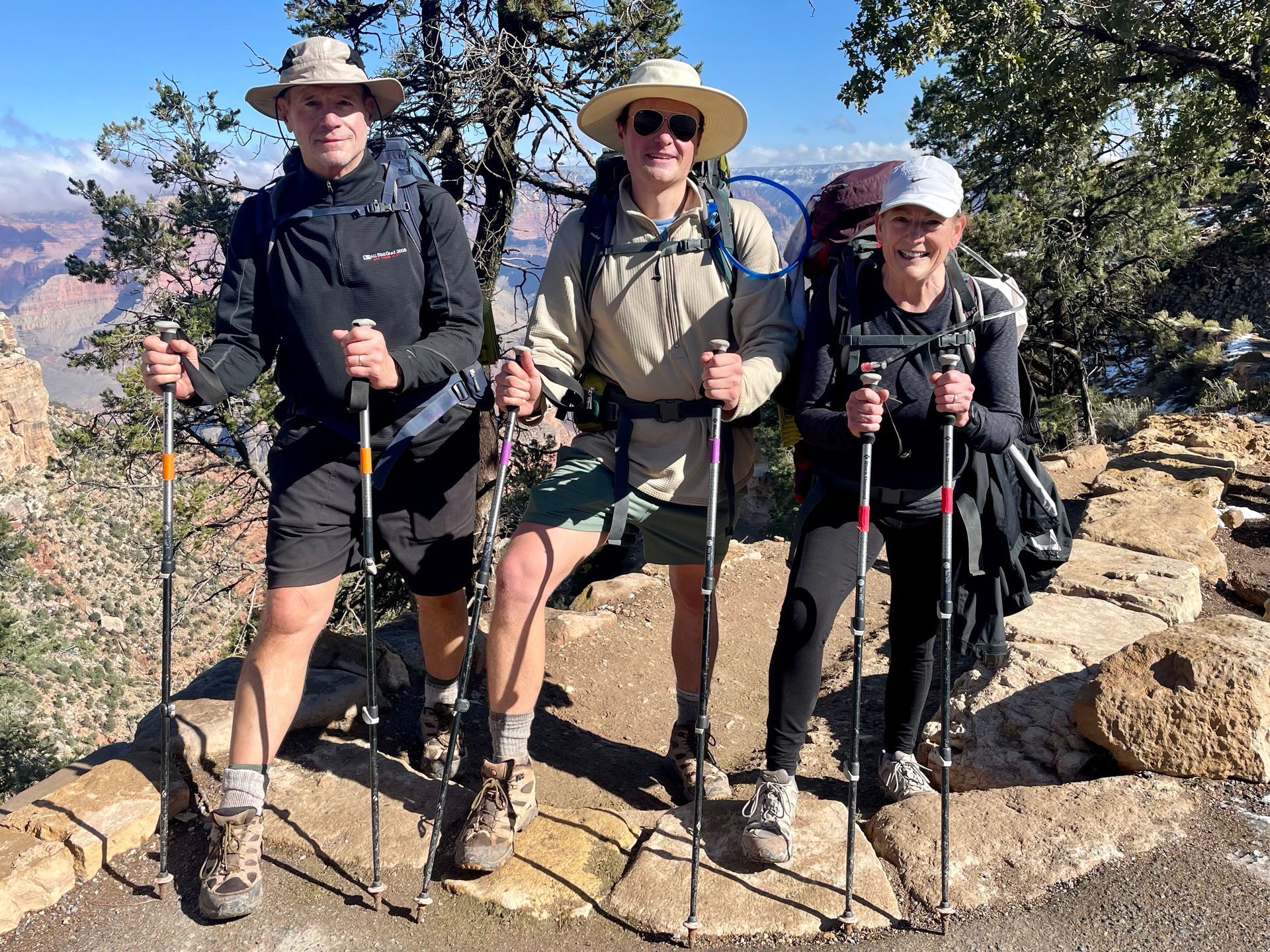
Key Takeaways
- Hydration is your top priority in the desert. Expect to drink 6–8 liters of water per day during long desert hikes, adjusting for temperature, intensity, and humidity to avoid dehydration or heat exhaustion.
- Drink smart, not excessively. Sip water regularly when thirsty and watch your urine color—a light yellow indicates proper hydration, while darker shades signal dehydration.
- Pair hydration with proper nourishment. Eating salty snacks and electrolyte-rich foods helps maintain your body’s salt balance and prevents hyponatremia, a serious condition caused by overhydration without electrolyte replacement.
- Plan your route around water access. Choose desert hikes with reliable water sources, bring purification tools, and consider lighter hydration options like hydration bladders for easier water management.
- Recognize early signs of dehydration. Symptoms like irritability, fatigue, and muscle weakness can escalate quickly into heatstroke—stay alert and take cooling breaks as needed.
- Prepare strategically for desert conditions. Hike during cooler parts of the day, wear lightweight clothing, and always carry backup water—a few extra pounds can be the difference between a safe and dangerous hike.
Summer temperatures in the Southwestern U.S. can be extreme. And though there are certainly cooler times of year to go hiking in the desert and backpacking, when planned thoughtfully and carefully, a hike can be extremely enjoyable. But one of the most important elements is proper hydration and nourishment. Too many desert hikers miss at least one of these crucial elements and the consequences range from basic dehydration all the way heat stroke.
Many people skimp on carrying enough water with them when hiking because…well…it is heavy. One-gallon weighs approximately 8.4 pounds. There is no getting around this. When planning your hike, just know you will be carrying some weight and factor this into your mileage goals.
It may be the case that you might have to sacrifice those fancy hiking gadgets and make sure you have plenty of water instead.
Symptoms of Dehydration
Dehydration symptoms can sneak up on you, which is why staying hydrated is discussed so much by hikers and backpackers alike. Dehydration safety tips are vital to understand before heading into the wild.
One of the earliest signs of dehydration is irritability. Your grumpy hiking buddy who usually loves to crush mile after mile on the trail is just not their cheerful self. They’re quiet, slow to respond, and just not a whole lot of fun. As the dehydration intensifies, many hikers may feel unusually fatigued, muscle weakness, and unwilling or even unable to move.
Severe dehydration can progress rapidly to heatstroke, with symptoms that include confusion, lack of sweating, extremely red (flushed) complexion, rapid heartbeat, extreme dry mouth, and delirium.
Heatstroke is an immediate threat to life and must be addressed rapidly with aggressive cooling.
When hiking or backpacking in the heat of the desert Southwest, it is imperative to stay properly hydrated and well-nourished in order to keep your body operating as effectively and efficiently as possible.
Plan properly for your adventure by checking the weather, hiking at strategic times of day to avoid the midday heat, packing plenty of food and water, and then eating and drinking regularly. These basic preparations will leave feeling secure and safe and help ensure that you experience nothing but good times during your adventure.
Frequently Asked Questions
Learn how to stay hydrated and safe while hiking in the hot, dry conditions of the Desert Southwest.
How much water should I drink while hiking in the desert?
Plan for about 1 liter of water per hour of hiking in hot desert conditions. For a full 6–8 hour hike, expect to need 6–8 liters. Your water needs vary depending on temperature, effort, and humidity—monitor your thirst and urine color to guide intake.
What are the signs of dehydration when hiking?
Early signs include irritability, fatigue, and muscle weakness. As dehydration worsens, symptoms may progress to confusion, a flushed face, lack of sweating, and rapid heartbeat. If heatstroke occurs—marked by delirium or extremely dry skin—seek immediate medical help.
How do I avoid overhydration when hiking?
Drink when you’re thirsty rather than forcing water. Overhydration, or hyponatremia, happens when you drink too much without replacing lost salts. Balance your intake with electrolyte drinks and salty snacks to maintain proper sodium levels.
What should I drink besides water in the desert?
Water is best, but supplementing with electrolyte drinks helps replace lost salts during long, sweaty hikes. Avoid alcohol and sugary beverages, which can increase dehydration. Choose hydration mixes with balanced electrolytes, not just sugar or flavoring.
How can I tell if I’m drinking enough water?
Check the color and frequency of your urine. You should urinate every few hours, and it should be pale yellow. Dark yellow or orange urine is a clear sign of dehydration and that you need more fluids.
What foods help with hydration on desert hikes?
Eat regularly, focusing on salty snacks like pretzels, peanuts, and crackers to replenish electrolytes. Pair food with steady water intake. Electrolyte mixes are helpful, but they should supplement—not replace—nutritious meals and snacks.
How can I reduce how much water I carry?
Plan routes that include access to natural water sources, and bring reliable filtration or purification tools. This lets you refill safely without carrying excessive weight, helping prevent fatigue and keeping your hike more enjoyable.
What’s the best time of day to hike in the desert?
Avoid the midday heat whenever possible. Start early in the morning or hike in the late afternoon when temperatures are cooler. This helps reduce dehydration risk and conserves your body’s energy and water reserves.
Is it safe to drink water from desert streams?
Only if treated properly. Always filter, boil, or chemically treat any non-potable water. Even clear-looking desert streams can contain harmful bacteria or contaminants that cause illness.
How do I stay hydrated during overnight desert trips?
Continue drinking water regularly after sunset. Use electrolyte drinks in moderation, and avoid alcohol, which can dehydrate you further. Store water close to your sleeping area for easy nighttime access.
Why is salt important for desert hikers?
When you sweat, you lose electrolytes—especially sodium. Without replacing them, you risk hyponatremia, which causes fatigue and confusion. Eating salty foods keeps your electrolyte balance steady and supports healthy hydration levels.
What should I pack to stay hydrated on a desert hike?
Bring enough water (at least 1 liter per hour), a hydration bladder or bottles, electrolyte supplements, salty snacks, and water purification tools. Lightweight, breathable clothing and a hat will also help you stay cool and reduce fluid loss.
Final Thoughts
If you’re wondering how much water to drink hiking Grand Canyon, remember: it's better to over-prepare than run dry. Local conditions can be unforgiving, and temperatures often exceed expectations.
Bonus Tips:
- Know how long is a 1 hour hike in your terrain. Desert trails can feel longer in extreme heat.
- Lightweight clothing for hiking in the desert clothing category helps keep your body temperature down.
- Be cautious when drinking water in the desert—filter or treat all non-potable sources.
- Even with prep, you might still find yourself desperately thirsty, so always bring backup water.
Ready for your desert adventure? Whether you're up for scenic day hikes, immersive backpacking, relaxing lodge-based tours, or fully customised tours designed around your needs, Four Season Guides has you covered. If you’re looking for something more intentional and community-driven, our women’s Death Valley hiking tour offers an empowering way to explore the desert Southwest—with expert support, shared experience, and unforgettable views.
Book your Southwest Backpacking Trip today by contacting Four Season Guides in Flagstaff, Arizona. A professional guide will answer the phone and interview you to determine the best scenario for your adventure. Call 928-525-1552 for more information or to book your trip today!
Four Season Guides, 506 N Grant St suite o, Flagstaff, AZ 86004, United States
+19285251552
35.19653980, -111.62000560

